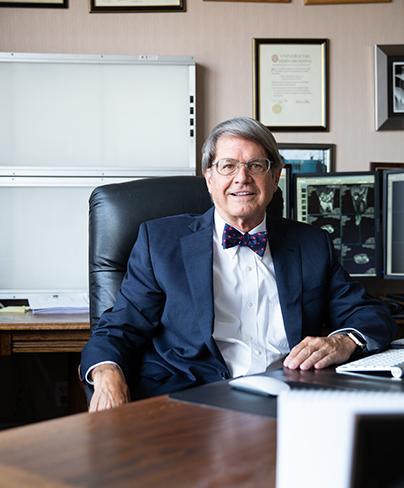Finding Aid
John Crues on radiology as a tool to navigate and map the human body
- 2 minute read
- Profile
John Vernon Crues III, MD ’79, Medical Director and Vice-President, RadNet

John Vernon Crues III, MD ’79, Medical Director and Vice-President, RadNet
Maps are crucial to successfully fighting forest fires. Just ask radiologist John Crues.
“We used topographic maps to plan the best attack route—it’s harder to fight a fire on steep terrain because it spreads more rapidly up a mountain slope. So you design where best to put your fire lines.”
Crues continues to rely on maps, although his mapping tool has changed. Now this medical director and vice-president of RadNet, a national chain of imaging centers based in Southern California, uses radiologic images and radiology tools to navigate and map the human body, much as he and his fellow smoke jumpers used topographic maps to plan their fights against forest fires.
Crues had just entered the field of radiology when magnetic resonance began being used medically. That proved to be great timing for the young physician.
Before settling on medicine as his profession, Crues had intended to study physics. Medicine, he decided, provided the human connection missing in the physics lab. At HMS, he learned of the HST program and was able to do his first two years’ course work in tandem with students in the program.
Near the end of his residency at Cedars-Sinai Medical Center in Los Angeles. the hospital began installing a high-field magnetic resonance scanner, one of the first such instruments in the world. Crues helped with the installation and, after residency, became Cedars-Sinai’s first director of magnetic resonance imaging.
Together with colleagues, Crues conducted some of the early research on the use of magnetic resonance to image the musculoskeletal system, particularly knees. With a colleague, he also conducted pioneering investigations of how humans handle heat load and temperature changes during a magnetic resonance scan.
“An MR scanner is a big microwave oven,” he says, “and one of the concerns was what physiologic effects that heating would have on the human body.” They showed the technology was safe for humans, findings that were pivotal to the developing field.
Crues now combines clinical work with running a training program in magnetic resonance for specialists located at his company’s various sites and for individuals who, as invited fellows to the program, come to the company for training. Crues lectures daily to program participants and posts the lectures online for use by radiologists worldwide.
According to Crues, magnetic resonance has changed sports medicine and orthopedics. The next big change: the use of artificial intelligence. The quantitative information it provides, Crues says, will allow greater precision in reading images.
Image: John Davis